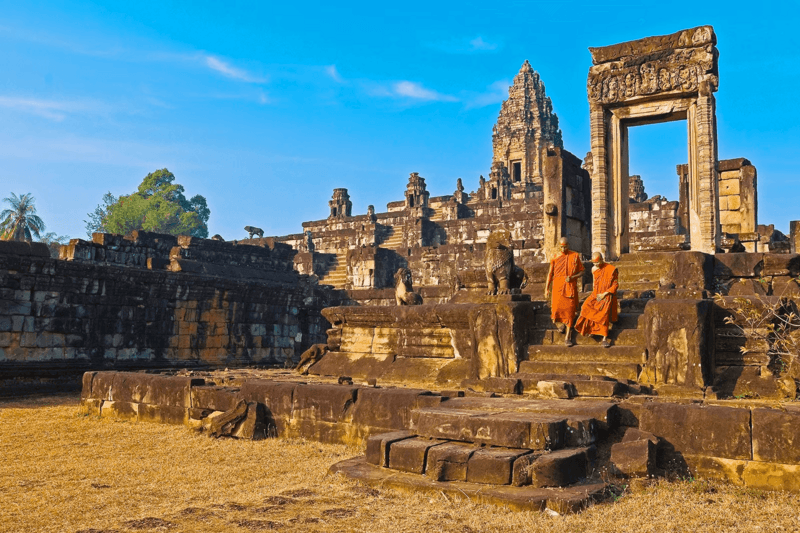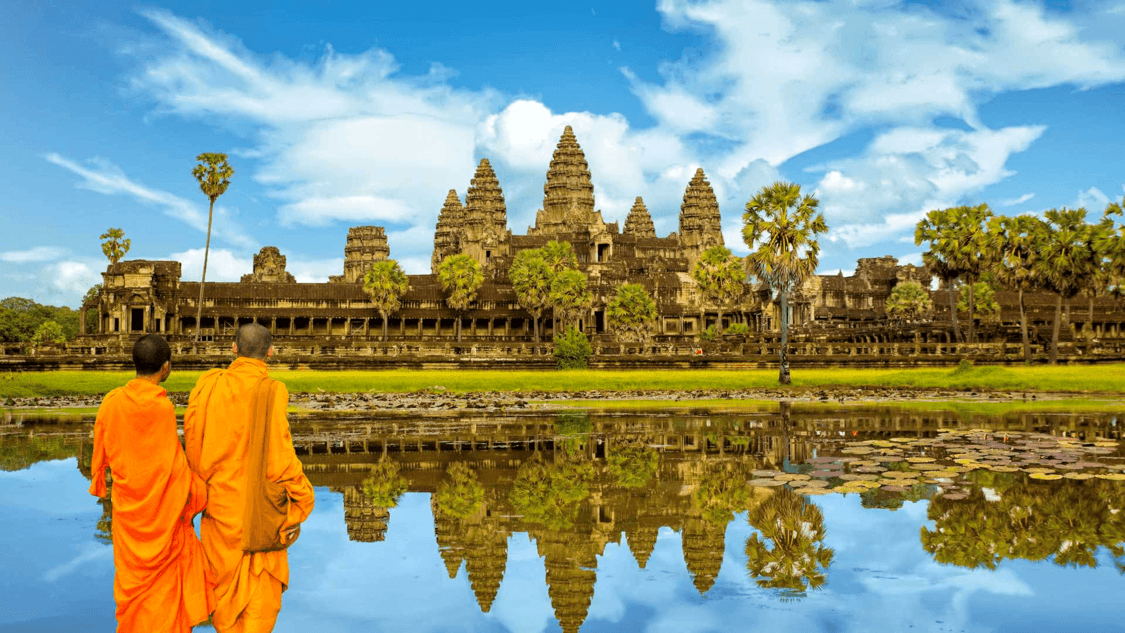Roluos Temples
The Roluos Temples are among the earliest large, permanent temples built by the Khmer people. They are the masterpiece of Indravarman I and represent the beginning of the Khmer classical art period. The main temples include Preah Ko, Bakong, and Lolei.
Preah Ko consists of six stone sanctuaries facing east, arranged in two rows. These sanctuaries are decorated with sandstone carvings and stucco reliefs, and are among the better-preserved artworks of Angkor. The temple's towers feature three sacred bulls, which, despite the passage of time, remain partially damaged.
Bakong is the largest and most interesting temple in the Roluos group. To the north of the eastern entrance of the temple, there is an active Buddhist monastery. Bakong was built by Indravarman I and is dedicated to Shiva. On either side of the temple, there are eight towers constructed from a mix of brick and sandstone, as well as two small sanctuaries. At the base of these eight towers, remnants of statues from the banquet period can still be partially seen.
Angkor Wat
Angkor Wat is one of the largest religious monuments in the world and a great ancient wonder of the East. It is a collective term for the Angkor monuments, located north of Siem Reap city in Cambodia, about 6 kilometers from the city center. Angkor Wat is recognized as one of the four great wonders of the ancient East, and the architectural style of Angkor Wat even serves as a symbol on the Cambodian national flag.
Royal Palace, Phnom Penh
The Royal Palace in Phnom Penh, also known as the Four Arms Bay Grand Palace, is a complex of buildings filled with traditional Khmer architectural style and religious atmosphere. It is located in Phnom Penh, Cambodia, at the confluence of the Mekong, Tonle Sap, and Bassac rivers, hence the name. The construction of the palace began in 1866 and took about four years, ordered by King Norodom.
The Royal Palace in Phnom Penh is the residence of the King of Cambodia, consisting of multiple buildings with golden roofs and yellow walls, showcasing its traditional Khmer architectural style. These include the Throne Hall, the Golden Pavilion, the Silver Pagoda, the Dance Pavilion, the Treasure Pavilion, and more than 20 other palaces of various sizes. Each palace has a spire, symbolizing prosperity. Yellow is a symbol of Buddhism, while white represents Brahmanism. The corridors of the buildings are decorated with magnificent relief murals inspired by Angkor Wat, depicting the glorious achievements of various dynasties and religious stories.
At the exit of the palace, visitors can enjoy traditional music performances, mostly performed by disabled individuals who have lost limbs due to landmines. The spacious lawn in front of the palace has become a place for people to relax. At dusk, local residents, monks, and tourists from around the world gather here, creating a lively scene.
It should be noted that currently, the areas of the Royal Palace open to the public are limited, mainly including the Silver Pagoda, the Coronation Hall, and the surrounding courtyards.









